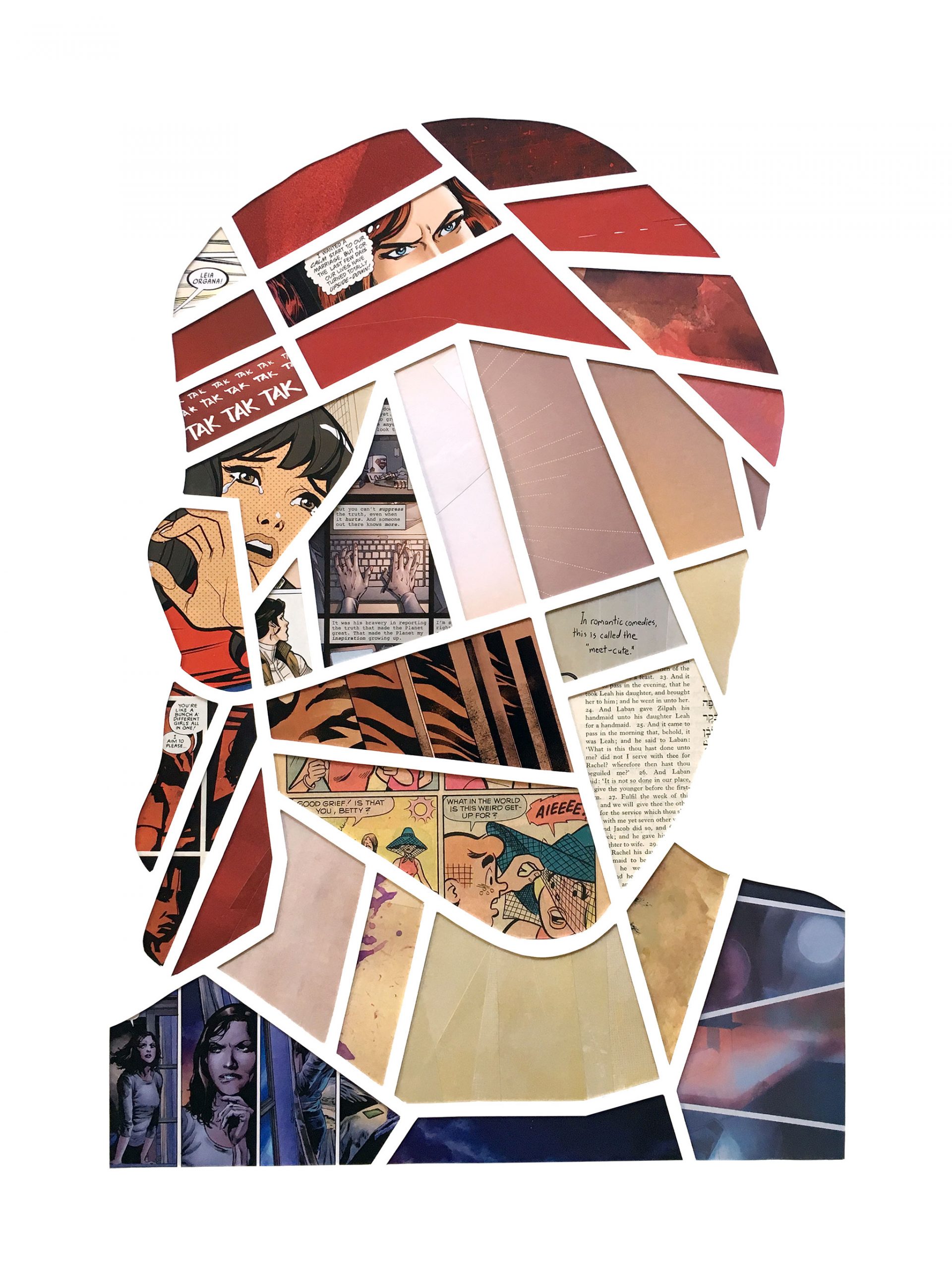During Sukkot, ushpizin – Aramaic for guests – are invited to the sukkah. According to the Jewish faith, the spirits of exalted ushpizin come to the sukkah on each day of the seven days of the holiday. One of them heads the ‘delegation’ and the others accompany him. The order of the ushpizin visits varies somewhat between Ashkenazi and Sephardi traditions. Abraham, Isaac and Jacob are always the first three guests, and that protocol is not up for debate. But after them, the order of the visits of Joseph, Moses, Aaron and David can vary between the Ashkenazi custom which follows the teachings of The Zohar, and the Sephardi and Chassidic custom which relies on the teachings of the ARI – Rabbi Isaac Luria. Some people also invite King Solomon on Shemini Atzeret, or save a chair for the prophet Elijah, because a holiday without Elijah simply isn’t a holiday.
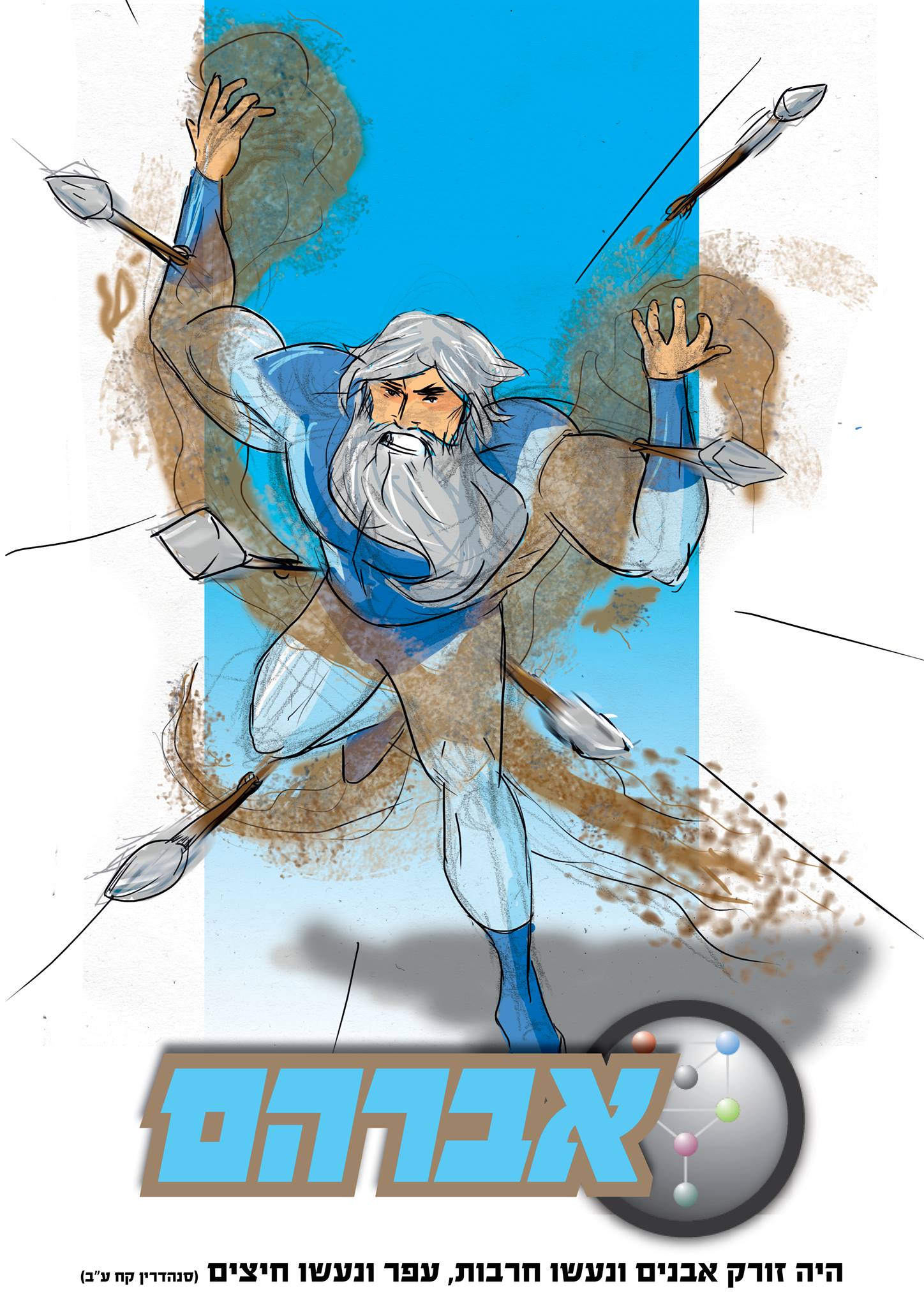
At least, that’s how it used to be. But the world is changing and so is the Jewish world. If in the past the disagreements were mostly over the order of the guests’ visits, at some point other questions began to emerge concerning the type of ushpizin who should be invited. First of all, some people didn’t like that only men were invited, so women started to be invited as well. And then people started going wild over the guest list. Like in every other area of life, the matter of the ushpizin has now become more open, flexible, pluralistic and inclusive.
The website of the Union for Reform Judaism website cites that “one of the many holiday customs is inviting guests to the sukkah. Apart from the actual guests, we also invite supernal guests. The ushpizin are our seven ancient forefathers, who come to visit us on each day of the holiday. Nowadays, we can invite both women and men. According to one of the suggestions, the guest list includes Sarah, Miriam, Deborah, Abigail, Hannah, Huldah and Esther. You can, of course, also invite more contemporary guests, such as Leah Goldberg, A.D. Gordon and others.” And after that introduction, they add the very generous question: “Who do you want to invite?”
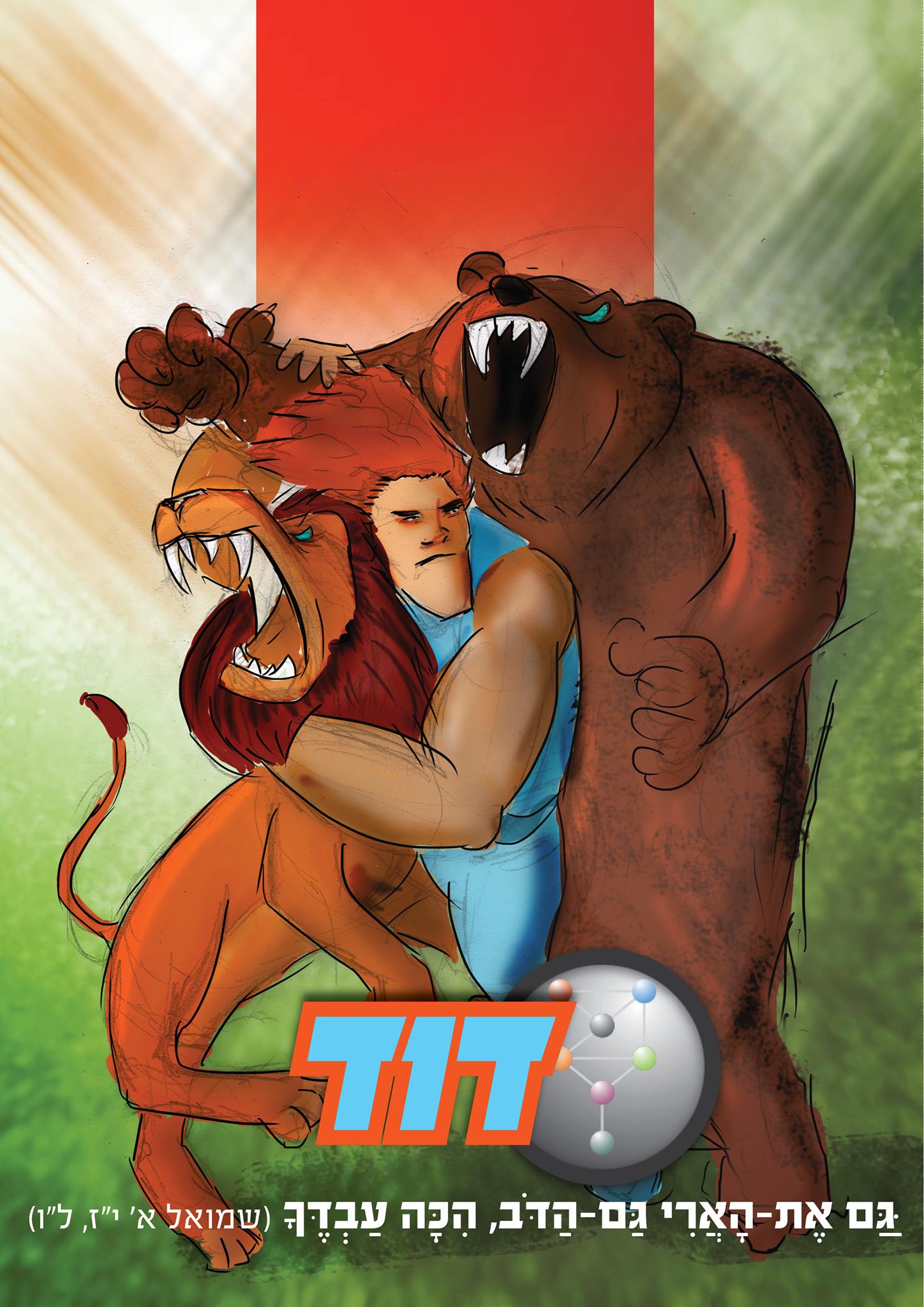
Oh! Good that you asked. Traditionally, the ushpizin were the fathers of the nation. Based on the examples that appear on the Union for Reform Judaism website, one can conclude that even in the Jewish world, where many barriers have been removed, it is still customary to make do with otherworldly guests who belong to the category of the dead Jews (whether actually or mythologically deceased). But there are good Jews who have taken the liberty of broadening the circle of ushpizin beyond that. They invite even more radical guests to their sukkah and, if truth be told, why not? If the idea is to invite inspirational heroes, why not invite heroes from the world of comics. But, of course, as long as they maintain the Jewish connection.
That’s precisely what a Southern California artist named Isaac Brynjegard-Bialik did during Sukkot in 2019. He opened an exhibition entitled Men of Steel and Women of Valor at the museum at The Temple-Tifereth Israel in Cleveland, Ohio – the city where the writer, Jerry Siegel, and the illustrator, Joe Shuster, first met when they were in high school. Siegel and Shuster went on to co-create Superman, the greatest superhero of all time.
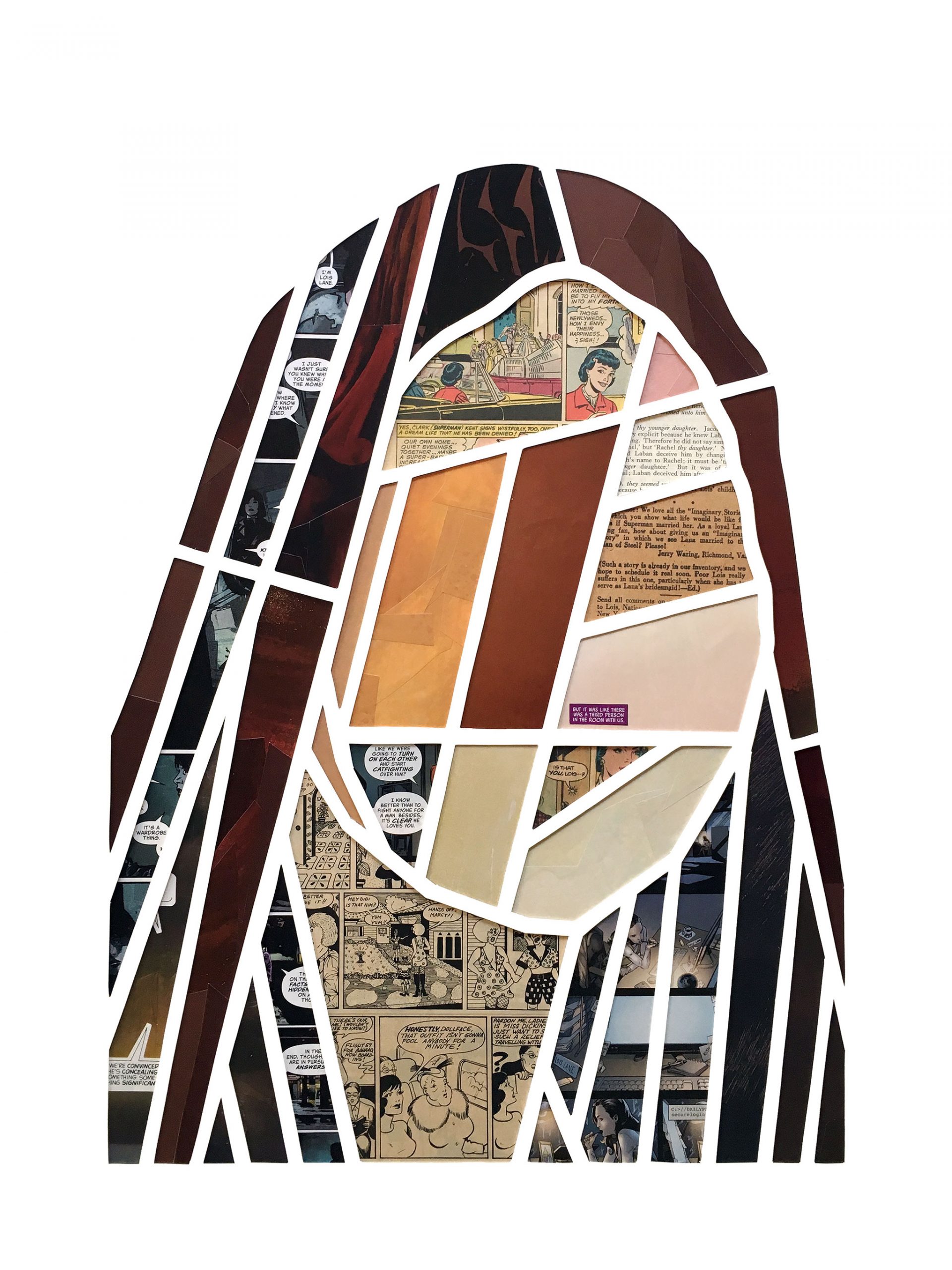
The exhibition was an extension of a workshop called Paper Midrash that Brynjegard-Bialik delivered together with his wife, a Reform rabbi. They used collages of cut-up comic books to tell Biblical stories. In fact, Brynjegard-Bialik began developing his paper -cut collage technique when he lived in Israel in the middle of the 1990’s. Later on, he started using cut-up comic books for his collages. The similarity between the narratives of Marvel and DC and those of Biblical stories has never ceased to amaze him. He also sees an aesthetic link in addition to the ambience. In an interview he gave on the occasion of the exhibition opening, he explained that this loud, bombastic, over-the-top narrative is Torah and also comic books.”
Using collages of cut-up comic books, Brynjegard-Bialik created portraits of various ushpizin – both the conventional ones as well as some other guests that he would be glad to host in his own sukkah, in line with the Reform worldview. Every character was made of cutouts of superheroes who fit their personalities.
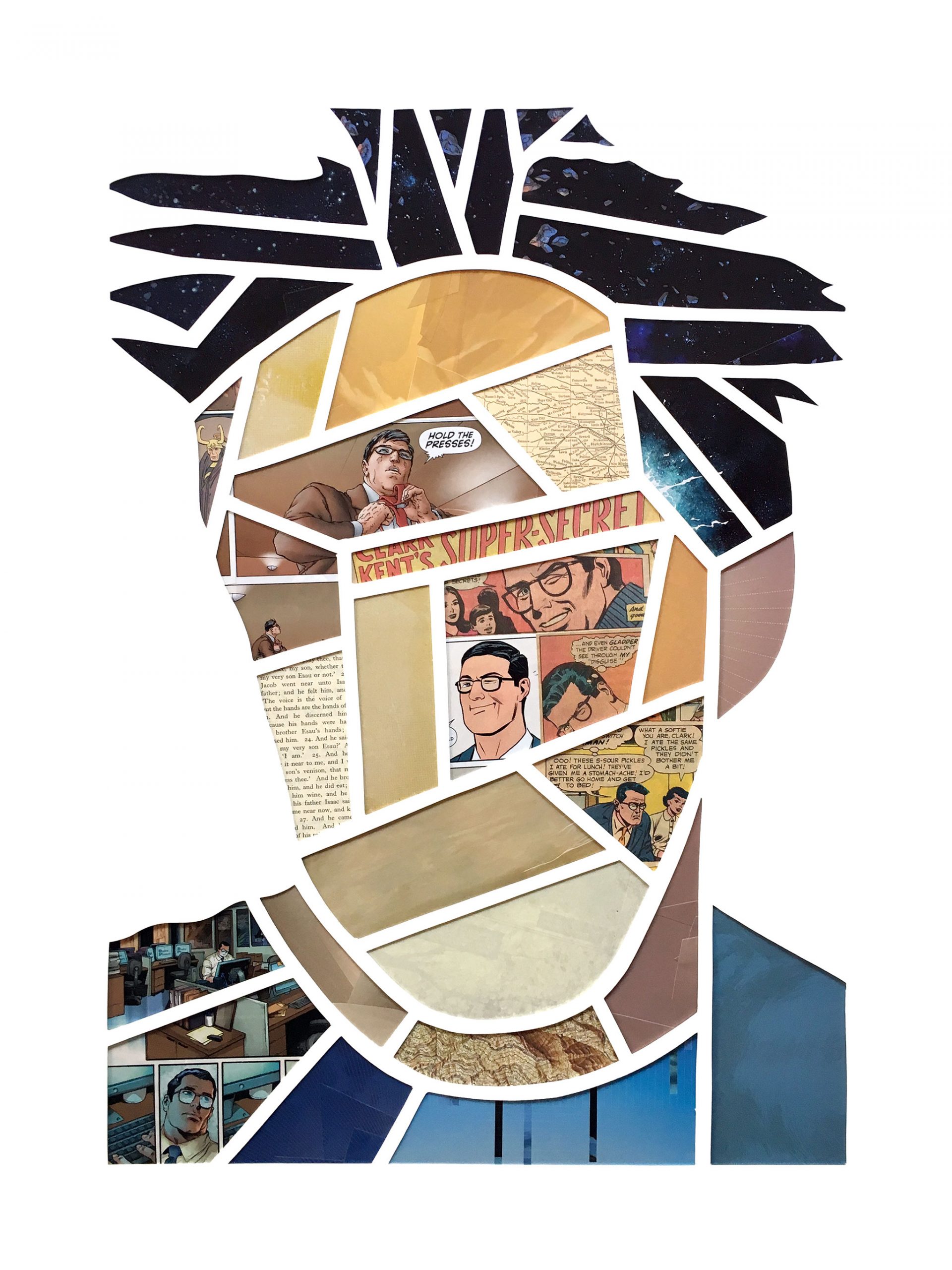
“At the heart of the exhibition is a series of large portraits of guests that I invited to my sukkah,” Brynjegard-Bialik wrote in the exhibition catalog. “My portraits of Biblical patriarchs and matriarchs incorporate superheroes from the world of comics as a way to investigate their personality and the meaning we can find in their stories. For example, Jacob’s story involves the hiding of one’s true identity and the discovery of who he really is. That’s why his portrait is made of comic strips ‘starring’ Clark Kent, Superman’s alter ego, and the mask he wears.”
The portraits in the exhibition included those of Abraham, Sarah, Isaac, Rebecca, Jacob, Leah, Rachel, Jerry Siegel, Joe Shuster, Golda Meir and Sally Priesand (the first female rabbi ordained in the United States, and the second in the world). In the case of the ushpizin power couple – Abraham and Sarah – their portraits are made of cutouts of Mr. Fantastic and the Invisible Woman from Marvel’s Fantastic Four. Like many other people, Brynjegard-Bialik would also be glad to host Golda Meir in his sukkah. For her portrait, he cut up comics of two Marvel superheroines: Sabra and Kitty Pryde. In case you’re not familiar with them, Sabra (whose real name is Ruth Bat-Seraph) is an Israeli superheroine who fought the green giant. The Israeli actress, Shira Haas, is slated to portray her character in the film Captain America: New World Order, which is scheduled to be released in 2024. Kitty Pryde, the X-Men’s youngest member, is also a Jewish superheroine and the granddaughter of Holocaust survivors.
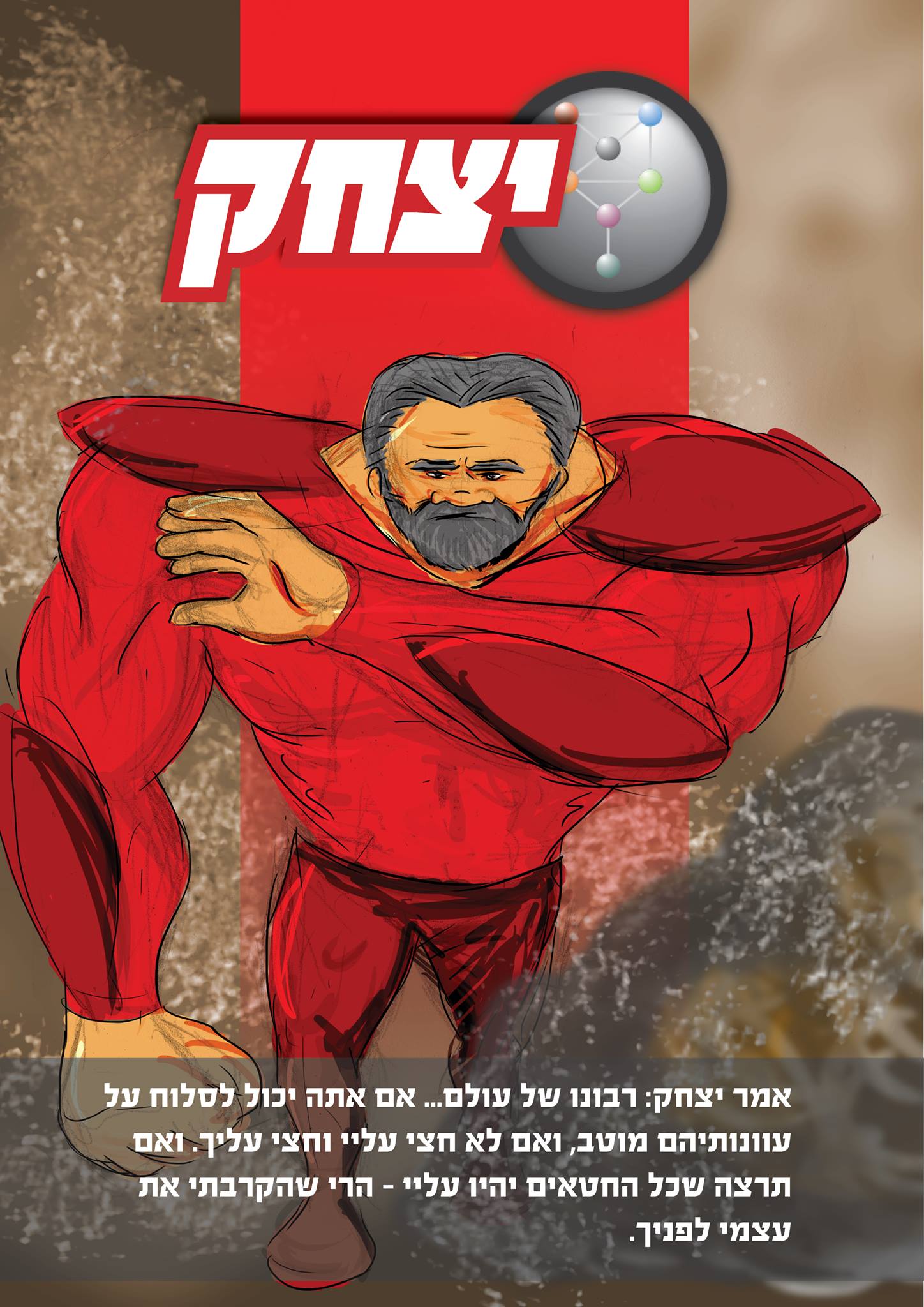
And if Brynjegard-Bialik created portraits of ushpizin using cut-up comic books, Yohanan Haik, a former graphic artist, illustrator and cartoonist from Jerusalem who is now a computer programmer, turned the ushpizin themselves into superheroes. In 2013, he created a set of illustrations called Ushpizin Ilaeen Kadishin (Exalted and Holy Guests). There’s no doubt that our forefathers had superpowers: our forefather Abraham tossed some sand and it turned into arrows, and David prevailed over giants. And Hiak chose to portray them as real superheroes, with raised fists and muscular arms. “I didn’t create it as comics,” he explained, “but rather more like a concept. This was something that sat in my head for a few years, all the commentaries that attributed superpowers in quotation marks to Biblical figures.”
Isaac Brynjegard-Bialik and Yohanan Haik were not the first and only people to see the connection between Biblical stories and heroes from the world of comics. So did Roy Schwartz, an Israeli who lives in the United States, who is also well aware of the parallels that can be drawn. He recently wrote the book Is Superman Circumcised?, which was published by McFarland last year. In his book, Schwartz tries to find proof that Superman was actually Jewish. While doing his research, he came across quite a few similarities between the fantastic worlds of superheroes and Biblical stories. The fact that the world of superheroes took shape in the 1930’s and 1940’s in the Jewish ghettos of the Lower East Side in Manhattan and the Bronx, led by a small group of young Jews of Eastern European origin, is of course not surprising.
So, the superheroes and the superheroines are the modern-day male and female ushpizin, who no doubt can turn any sukkah into a much more vibrant and exciting place.
